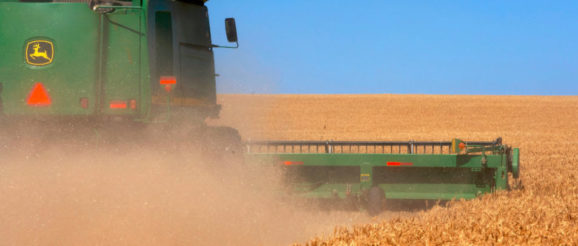USDA lays out Agriculture Innovation Agenda

WASHINGTON — US Secretary of Agriculture Sonny Perdue on Feb. 20 announced the launch of the Agriculture Innovation Agenda, a department-wide initiative to align resources, programs and research to position American agriculture to better meet future global demands.
As part of the initiative, the US Dept. of Agriculture said it aims to stimulate innovation so that American agriculture can achieve the goal of increasing US agricultural production by 40 percent while cutting the environmental footprint of US agriculture in half by 2050.
“We know we have a challenge facing us: to meet future food, fiber, fuel and feed demands with finite resources,” Perdue said in announcing the initiative to participants at the 2020 Agricultural Outlook Forum in Washington. “USDA’s Agriculture Innovation Agenda is our opportunity to define American agriculture’s role to feed everyone and do right as a key player in the solution to this challenge. This agenda is a strategic, department-wide effort to better align USDA’s resources, programs and research to provide farmers with the tools they need to be successful. We are also continually mindful of the need for America’s agriculture industry to be environmentally, socially and economically sustainable to maintain our position as a leader in the global effort to meet demand. We are committed as ever to the environmental sustainability and continued success, of America’s farmers, ranchers, foresters and producers.”
The USDA has identified three components to its plan.
The first component is to create a comprehensive US agriculture innovation strategy to align public and private research efforts. According to the USDA, “bold and transformative” innovation is needed to meet future demands, and to meet its goal the department intends to gather input from the agricultural community on what innovative technologies and practices are needed to meet these demands. The information that is gathered will then be used to seek alignment between the research goals of the scientific and innovation communities, the USDA said.
Over the next year the USDA said it will utilize innovation breakthrough opportunities derived from a 2019 National Academies of Science report to form the basis of a forthcoming USDA Request for Information on the most important innovation opportunities to be addressed in the near and long term. Additionally, the USDA said it plans to identify common themes across the agriculture customer base to inform research and innovation efforts.
The second component of its plan involves the integration of the latest innovative conservation technologies and practices into U.S.D.A. programs. The U.S.D.A. said it plans to focus on program delivery to encourage rapid adoption of cutting-edge technologies and practices, as well as championing commercialization of innovative technologies in the private sector.
To help accomplish the goals of the second component the USDA over the next year plans to improve internal coordination in order to facilitate transmission of best approaches among USDA research and program agencies. The agency also intends to develop standardized OneUSDA processes, which will include a “fast pass” process for immediate intake and integration of proven technologies.
The third component is to conduct a review of USDA productivity and conservation data. Although the USDA already tracks data on commodity production, information on how food is produced and the conservation practices being employed is getting harder to locate. The USDA said it plans to analyze and recommend improvements to conservation reporting systems that will be regularly updated, leveraging data from existing USDA surveys.
The USDA said it intends to hold itself accountable for achieving the components and has established several benchmarks. Some of the benchmarks include:
• Food loss and waste: Advance its work toward the United States’ goal to reduce food loss and waste by 50 percent in the United States by the year 2030.
• Carbon sequestration and greenhouse gas: Enhance carbon sequestration through soil health and forestry, leverage the agricultural sector’s renewable energy benefits for the economy and capitalize on innovative technologies and practices to achieve net reduction of the agricultural sector’s current carbon footprint by 2050 without regulatory overreach.
• Water quality: Reduce nutrient loss by 30 percent nationally by 2050.
• Renewable energy: Increase the production of renewable energy feedstocks and set a goal to increase biofuel production efficiency and competitiveness to achieve market-driven blend rates of 15 percent of transportation fuels in 2030 and 30 percent of transportation fuels by 2050.
For the full report, click here.
